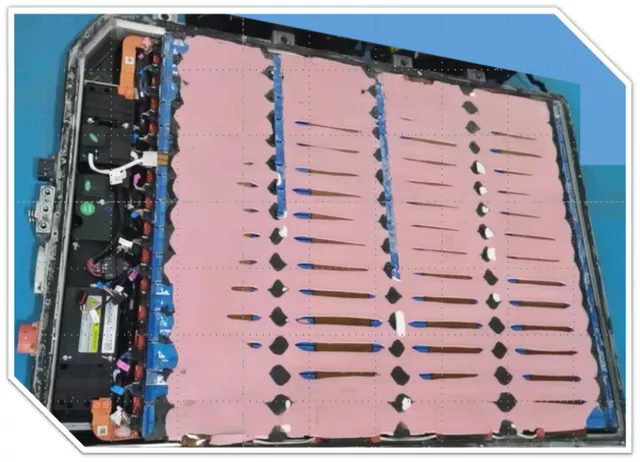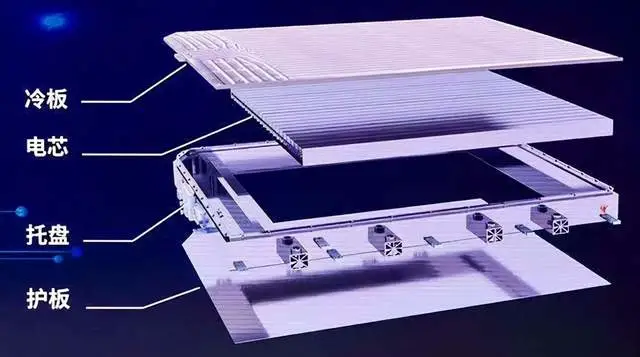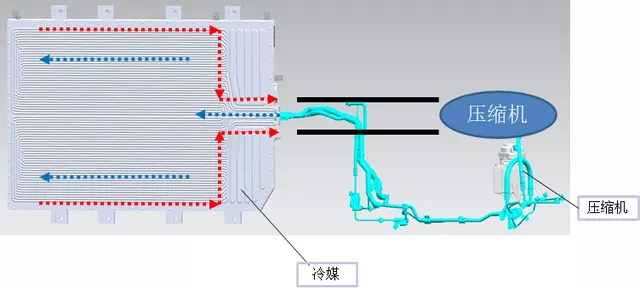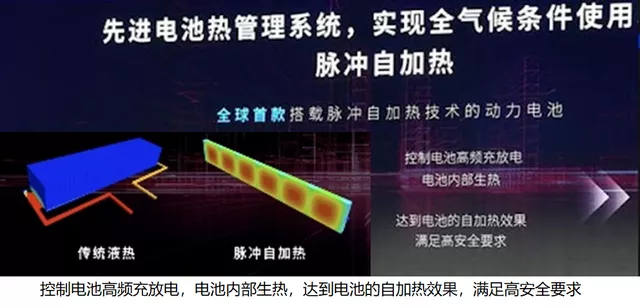Today I saw a friend sharing information about the DM-I 120km battery version (previously claimed to cover a power range of 8.3-46kWh). The information was presented in a single flowchart.
Combining my own knowledge, let’s summarize the design concept, ideas and development of this thick-blade battery. From a theoretical perspective, the thick-blade battery is essentially an innovation based on soft-packed lithium iron phosphate, which may be a viable option in the long term.

Thermal management of DM-i blade batteries
In Figure 1, we can see something different from before – embedded heating film. In other words, in the structure presented, there is an added heating film, and thermal resistance is minimized by using thermal conductive gel on top of the heating film.

In the BYD promotional materials, two cooling modes were mainly adopted:
1) Battery cooling: using refrigerant direct cooling technology, refrigerant is directly introduced into the battery pack for cooling, which reduces one level of energy exchange compared to liquid cooling, and heat exchange efficiency is increased by 20%.

2) Battery heating: pulse self-heating technology, through high-frequency battery charging and discharging not only can heat the battery but also heat it uniformly, which is 10% more efficient than liquid heating.

However, in actual use, the rate of pulse self-heating is uncertain and not as direct as simply adding heating film on the surface of the thick-blade battery. As stated earlier, this is not an easy task, especially to evenly heat so many serially connected lithium iron phosphate batteries. Relying solely on the high-frequency oscillation effect of self-heating is not practical.
DM-i Design Philosophy
In my opinion, this thick-blade battery design is aimed at Toyota.
This particularly long thick-bladed battery has the same idea as Toyota’s use of multiple standard nickel-hydrogen batteries enclosed in a long nickel-hydrogen battery. After several soft packs are made into finished products, they are placed together by two insulators and then arranged in groups by the long rectangular shell.The battery design of DM-i, as shown in Figure 5, features multiple soft packs in series integrated within a single battery cell. This design aims to achieve a very high level of grouping rate for PHEVs. This simple and elegant structure is favored by battery system layout engineers.
From the perspective of battery structure, this is indeed a good design. However, the operation of this shell layer is performed on the battery module line (similar to module assembly), as well as sealing and other processes, which poses challenges in terms of manufacturing yield for the soft pack battery cell; particularly, once a self-discharge problem occurs in one cell after foaming and pressure are applied, the overall characteristics of the battery cell will be greatly affected. This poses quite significant manufacturing challenges for small-capacity lithium iron phosphate batteries.
As for the DM-i’s electrical connections and cooling, they are relatively simple, as shown in Figure 7.
In summary, I quite like this design. Overall, the pack cost is relatively low, but whether there is further potential to reduce costs for the thick blade battery as a whole remains to be discussed.
This article is a translation by ChatGPT of a Chinese report from 42HOW. If you have any questions about it, please email bd@42how.com.